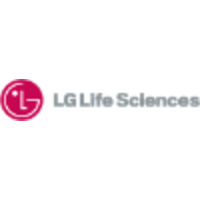预约演示
更新于:2025-12-11
Hib-DTP-hepatitis-B vaccine(LG Life Sciences Ltd.)
更新于:2025-12-11
概要
基本信息
非在研机构- |
权益机构- |
最高研发阶段批准上市 |
首次获批日期- |
最高研发阶段(中国)- |
特殊审评- |
登录后查看时间轴
关联
3
项与 Hib-DTP-hepatitis-B vaccine(LG Life Sciences Ltd.) 相关的临床试验CTRI/2016/01/006541
A Phase III Multicentric Randomized Single Blind Study to Compare the Immunogenicity and Safety of HBI Pentavalent (DTwP-Hb-Hib[Liquid]) Combination Vaccine with Pentavac SD® Vaccine when Administered in Three Doses to 6-8 weeks old Healthy Infants - Pentavalent Phase III Clinical trial
开始日期2016-01-22 |
申办/合作机构 |
CTRI/2015/04/005688
A Phase I/II (Pilot) Trial to Evaluate the Safety and Immunogenicity of HBI Pentavalent (DTwP-Hb-Hib [Liquid]) Combination Vaccine in two groups of Healthy Subjects from 16 Months to 24 Months of Age and Two Years to Five Years of Age.
开始日期2015-04-11 |
申办/合作机构 |
CTRI/2009/091/000843
A prospective, multicentre, comparative, open label, randomised phase III study to assess immunogenicity and safety of LBVF0101 {DTwP-HB-Hib (combined vaccine which is reconstituted from LBVW0101 (Diphtheria-Tetanus-whole cell Pertussis-Hepatitis B) and LBVH0101 (Haemophilus influenzae type b tetanus toxoid conjugate vaccine) just before intramuscular injection} compared with combined vaccine which is reconstituted from Tritanrix HB®(Diphtheria-Tetanus-whole cell Pertussis-Hepatitis B) and Hiberix® (Haemophilus influenzae type b tetanus toxoid conjugate vaccine) just before intramuscular injection in healthy infants at six, ten and fourteen weeks of age.
开始日期2009-10-23 |
申办/合作机构 |
100 项与 Hib-DTP-hepatitis-B vaccine(LG Life Sciences Ltd.) 相关的临床结果
登录后查看更多信息
100 项与 Hib-DTP-hepatitis-B vaccine(LG Life Sciences Ltd.) 相关的转化医学
登录后查看更多信息
100 项与 Hib-DTP-hepatitis-B vaccine(LG Life Sciences Ltd.) 相关的专利(医药)
登录后查看更多信息
12
项与 Hib-DTP-hepatitis-B vaccine(LG Life Sciences Ltd.) 相关的文献(医药)2024-12-31·Human Vaccines & Immunotherapeutics
Antibody persistence to diphtheria toxoid, tetanus toxoid,
Bordetella pertussis
antigens, and
Haemophilus influenzae
type b following primary and first booster with pentavalent versus hexavalent vaccines
Article
作者: Wanlapakorn, Nasamon ; Poovorawan, Yong ; Sarawanangkoor, Nasiri ; Thongmee, Thanunrat ; Srimuan, Donchida ; Thatsanathorn, Thaksaporn
Thailand has incorporated the whole-cell (wP) pertussis vaccine into the expanded program on immunization since 1977 and has offered the acellular pertussis (aP) vaccine as an optional vaccine for infants since 2001. We followed healthy children from a clinical trial (ClinicalTrials.gov NCT02408926) in which children were randomly assigned to receive either pentavalent (DTwP-HB-Hib) or hexavalent (DTaP-IPV-HB-Hib) vaccines for their primary series (administered at 2, 4, and 6 months) and first booster vaccination (18 months). Both groups received Tdap-IPV as a second booster at the age of 4 y. Blood samples were collected for evaluation of antibody persistence to diphtheria toxoid (DT), tetanus toxoid (TT), and Bordetella pertussis (B. pertussis) between 2 and 6 y of age annually, and for the immunogenicity study of Tdap-IPV at 1 month after the second booster. Antibody persistence to Haemophilus influenzae type b (Hib) was followed until 3 y of age. A total of 105 hexavalent-vaccinated children and 91 pentavalent-vaccinated children completed this study. Both pentavalent and hexavalent groups demonstrated increased antibody levels against DT, TT, and B. pertussis antigens following the second booster with Tdap-IPV. All children achieved a seroprotective concentration for anti-DT and anti-TT IgG at 1 month post booster. The hexavalent group possessed significantly higher anti-pertactin IgG (adjusted p = .023), whereas the pentavalent group possessed significantly higher anti-pertussis toxin IgG (adjusted p < .001) after the second booster. Despite declining levels post-second booster, a greater number of children sustained protective levels of anti-DT and anti-TT IgG compared to those after the first booster.
2024-10-01·Vaccine: X
Persistence of hepatitis B surface antibody until 7 years of age following administration of hexavalent and pentavalent vaccines in children at 2, 4, 6, and 18 months
Article
作者: Wanlapakorn, Nasamon ; Sarawanangkoor, Nasiri ; Poovorawan, Yong ; Klinfueng, Sirapa ; Thatsanathorn, Thaksaporn ; Srimuan, Donchida
Thailand incorporated the hepatitis B (HepB) vaccine into the infant combination vaccine known as pentavalent wP-containing vaccines (DTwP-HB-Hib) and hexavalent aP-containing vaccines (DTaP-IPV-HB-Hib). We followed healthy children from the clinical trial (ClinicalTrials.gov NCT02408926) in which children were randomly assigned to receive either pentavalent or hexavalent vaccines for their primary series (administered at 2, 4, and 6 months) and first booster vaccination (at 18 months), following the monovalent HepB vaccine at birth. Blood samples were collected to evaluate the persistence of hepatitis B surface antibody (anti-HBs) at 3, 4, 5, 6 and 7 years of age. The results showed that at 7 years of age, a higher percentage of children in the hexavalent group maintained anti-HBs levels ≥ 10 mIU/mL compared to those in the pentavalent group (86.9 % vs. 59.7 %). This study showed good persistence of anti-HBs among hexavalent-vaccinated children 5.5 years after the last dose of the HepB vaccine.
2023-06-01·Vaccine
Immunogenicity of the pentavalent DTwP-HB-Hib vaccine (Shan-5) used in the Thai Expanded Program on Immunization compared to the hexavalent DTaP-HB-Hib-IPV and DTwP-HB-Hib (Quinvaxem) vaccines administered to infants at 2, 4, 6 months of age
Article
作者: Wanlapakorn, Nasamon ; Thongmee, Thanunrat ; Pruetarat, Napa ; Sarawanangkoor, Nasiri ; Posuwan, Nawarat ; Srimuan, Donchida ; Thatsanathorn, Thaksaporn ; Poovorawan, Yong ; Phanphanit, Kanchana
BACKGROUND:
The pentavalent DTwP-HB-Hib (Shan-5) vaccine was first introduced into the Thailand Expanded Program on Immunization (EPI) in 2019. The Shan-5 vaccine is administered to infants at 2, 4, and 6 months of age, after initial vaccination with monovalent hepatitis B (HepB) and Bacillus Calmette-Guérin (BCG) vaccines at birth. This study compared the immunogenicity of the HepB, diphtheria, tetanus, and Bordetella pertussis antigens incorporated in the EPI Shan-5 vaccine versus the optional pentavalent (DTwP-HB-Hib) Quinvaxem and hexavalent (DTaP-HB-Hib-IPV) Infanrix-hexa vaccine.
METHODS:
Three-dose Shan-5-vaccinated children were prospectively enrolled at the Regional Health Promotion Centre 5, Ratchaburi province, Thailand, between May 2020 and May 2021. Blood sampling was performed at months 7 and 18. The levels of HepB surface antibody (anti-HBs), anti-diphtheria toxoid (DT) IgG, anti-tetanus toxoid (TT) IgG, and anti-pertussis toxin (PT) IgG were evaluated using commercially available enzyme-linked immunoassays.
RESULTS:
Anti-HBs levels of ≥10 mIU/mL were achieved in 100 %, 99.2 %, and 99.2 % of infants in the Shan-5 EPI group, hexavalent group and Quinvaxem group one month after four dose immunization (at 0, 2, 4, 6 months of age), respectively. The geometric mean concentrations of the EPI Shan-5 and hexavalent groups were comparable but were higher than those of the Quinvaxem group. At one month after primary vaccination (month 7), infants in the Shan-5 EPI group had significantly higher levels of anti-DT IgG, anti-TT IgG, and anti-PT IgG than infants in the hexavalent and Quinvaxem groups.
CONCLUSIONS:
The immunogenicity of the HepB surface antigen in the EPI Shan-5 vaccine was similar to that achieved by the hexavalent vaccine, but was higher than that achieved by the Quinvaxem vaccine. The Shan-5 vaccine is highly immunogenic and generates robust antibody responses after primary immunization.
100 项与 Hib-DTP-hepatitis-B vaccine(LG Life Sciences Ltd.) 相关的药物交易
登录后查看更多信息
外链
| KEGG | Wiki | ATC | Drug Bank |
|---|---|---|---|
| - | - | - |
研发状态
10 条最早获批的记录, 后查看更多信息
登录
| 适应症 | 国家/地区 | 公司 | 日期 |
|---|---|---|---|
| 白喉 | - | - | |
| 流感嗜血杆菌感染 | - | - | |
| 乙型肝炎 | - | - | |
| 破伤风 | - | - | |
| 百日咳 | - | - |
登录后查看更多信息
临床结果
临床结果
适应症
分期
评价
查看全部结果
| 研究 | 分期 | 人群特征 | 评价人数 | 分组 | 结果 | 评价 | 发布日期 |
|---|
No Data | |||||||
登录后查看更多信息
转化医学
使用我们的转化医学数据加速您的研究。
登录
或

药物交易
使用我们的药物交易数据加速您的研究。
登录
或

核心专利
使用我们的核心专利数据促进您的研究。
登录
或

临床分析
紧跟全球注册中心的最新临床试验。
登录
或

批准
利用最新的监管批准信息加速您的研究。
登录
或

特殊审评
只需点击几下即可了解关键药物信息。
登录
或

生物医药百科问答
全新生物医药AI Agent 覆盖科研全链路,让突破性发现快人一步
立即开始免费试用!
智慧芽新药情报库是智慧芽专为生命科学人士构建的基于AI的创新药情报平台,助您全方位提升您的研发与决策效率。
立即开始数据试用!
智慧芽新药库数据也通过智慧芽数据服务平台,以API或者数据包形式对外开放,助您更加充分利用智慧芽新药情报信息。
生物序列数据库
生物药研发创新
免费使用
化学结构数据库
小分子化药研发创新
免费使用

